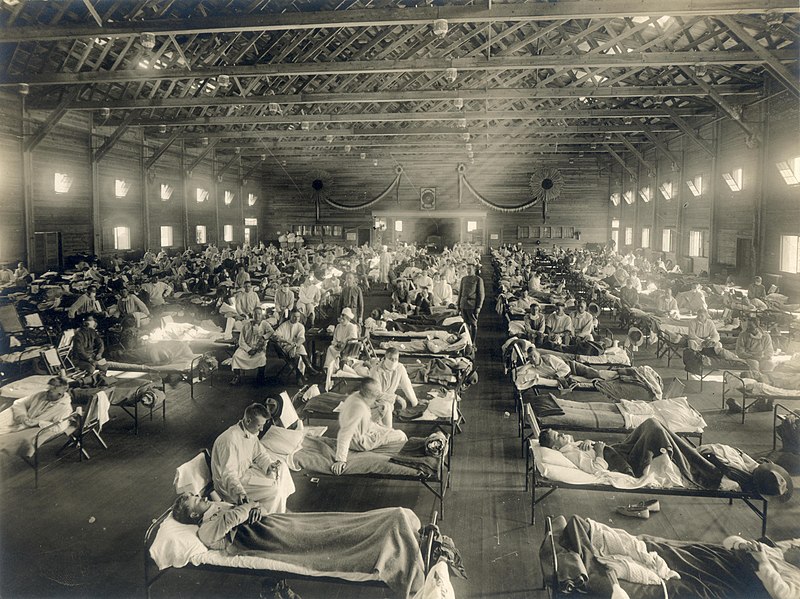The “Spanish Flu” as it was called, first appeared in Europe in late 1917 as WW1 raged. The symptoms were so unusual that doctors were baffled and misdiagnosed it as dengue, cholera, or typhoid. What began as a mild infection in January 1918, soon infected thousands of troops and millions of people in Europe. The epidemic seemed to concentrate in the hospitals where infections quickly spread. Soldiers and others returning from Europe brought the virus to the United States. The first cases were reported in Boston, but soon the virus infected the entire east coast, and rapidly spread as trains transported people across the nation. Though the symptoms were similar to the flu, doctors were still unsure of its diagnosis. [1]

As summer of 1918 approached, the sickness seemed to slow, but made a deadly comeback in the fall of 1918. Around the world, millions became infected and died, as this second wave was especially virulent and lethal. In the U.S., an estimated 675,000 people died of the flu between 1918 and 1919. Those infected suffered with typical flu symptoms of fever, nausea, aches and diarrhea, however, many deteriorated into severe pneumonia, with victims turning blue as their lungs filled with frothy blood, suffocating them to death.[2]
Here in Wisconsin, the flu hit with a fury. Newspapers from Janesville to Rhinelander were with filled with articles of daily infections and deaths of residents. Vaccines were unknown at the time, so many turned to home remedies including chest rubs, boiled red peppers, sliced onions strategically placed around the home to “absorb the virus,” bloodletting and laxatives, but none were effective.[3] Many families were devastated as one by one, children and parents died of the sickness. Even today, cemeteries around the state reveal the overwhelming sorrow and sadness of that time as one reads the dates of death on many family graves to be only days apart.
Next time, “More
From Wisconsin”
[1] https://www.ncbi.nlm.nih.gov/books/NBK22148/
[2] https://www.npr.org/templates/story/story.php?storyId=4946718
[3] https://www.rd.com/culture/crazy-old-time-flu-remedies/
*
*
*